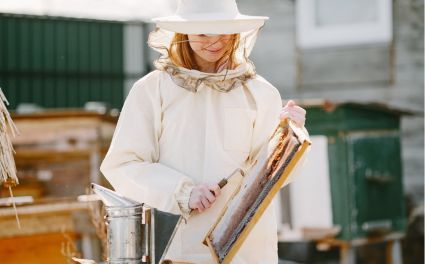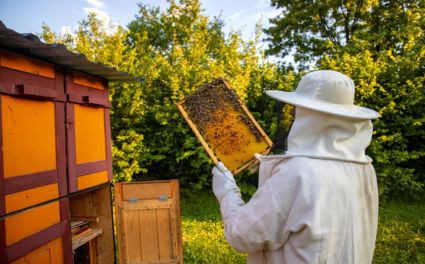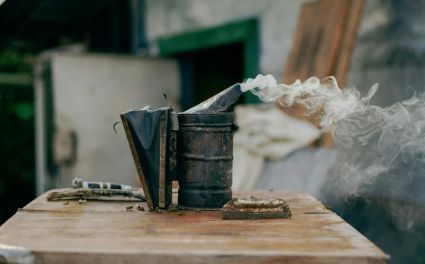Beekeeping is often romanticised as a low-cost hobby that rewards you with jars of golden honey. While that’s partly true, many beginners are surprised at the actual beekeeping costs involved. From setting up your first hive to maintaining colonies year after year, there are expenses that go far beyond just buying bees.
Whether you’re exploring it as a hobby or considering turning it into a small business, understanding the true cost of beekeeping will help you set a realistic budget and avoid costly surprises.
Beekeeping Costs for Beginners
If you’re brand new, expect your beginner beekeeping costs to be front-loaded. Most of the investment happens in the first year when you purchase hives, tools, and protective gear. On average, hobbyists spend anywhere between a few hundred to a couple of thousand dollars to get started.
Key beekeeping expenses at this stage include:
-
Your first colony of bees (package bees or a 5-frame nucleus colony).
-
Woodenware such as brood boxes, supers, and frames.
-
Protective clothing like beekeeping jackets, gloves, and veils.
-
Tools including a smoker, hive tool, and feeders.
These one-time costs are essential for a safe and successful start. However, remember that not all expenses stop after the first season.

The Cost of Beekeeping Equipment
One of the biggest investments is in your beekeeping equipment. A complete beekeeping startup budget should cover both basic and advanced gear.
-
Protective gear: Full-body beekeeping suits are often worth the investment for all-round safety. For lighter protection, many opt for beekeeping gloves, beekeeping veils, or breathable beekeeping trousers.
-
Honey extraction equipment: Extractors, strainers, and storage containers can significantly add to your beekeeping costs, especially if you want to sell honey.
-
Children’s gear: Families often invest in beekeeping kids suits to keep young helpers safe while learning.
Many beginners start small and expand gradually, making their beekeeping for beginners expenses more manageable.
The Cost of Bees and Hives
Of course, the heart of your operation is the bees themselves. The cost of bees and hives varies depending on whether you buy package bees, a nucleus colony (NUC), or a mated queen.
-
Package bees are cheaper but take longer to establish.
-
NUCs cost more but include a laying queen and drawn comb for a head start.
-
Queens purchased separately for requeening are an additional expense.
Don’t forget the hive itself. While Langstroth hives are most common, alternatives may be pricier. There are also hidden costs of beekeeping such as frame replacements, foundation wax, or even extra protection like beekeeping ankle protection to reduce sting risks when working at ground level.
Annual Beekeeping Costs and Maintenance
Once your hive is established, there are ongoing annual beekeeping costs to factor in:
-
Feeding: Sugar syrup or pollen substitutes during nectar shortages.
-
Medication: Treatments for Varroa mites and other diseases.
-
Hive maintenance: Replacing frames, repairing boxes, or buying new supers.
-
Seasonal expenses: Winter insulation, storage, and transport.
These recurring beekeeping expenses are necessary for colony health and long-term productivity.
Beekeeping as a Business – Investment and Profit
If you plan to expand, the cost of starting a beekeeping business goes far beyond a single hive in the backyard. You’ll need:
-
Commercial-grade extractors and bottling equipment.
-
Packaging, branding, and licensing.
-
Transport for migratory pollination contracts.
-
Labour or part-time help.
On the flip side, a business can generate revenue through honey, beeswax, propolis, royal jelly, or even selling nucleus colonies. While the upfront beekeeping investment is higher, there’s also potential for significant beekeeping profit and return over time.
Is Beekeeping Expensive? Breaking the Myth
So, is beekeeping expensive? The answer depends on your goals and scale. Hobby beekeeping has higher first-year costs, but once your equipment is in place, the recurring expenses are manageable. For businesses, the startup costs are higher, but the returns can offset the investment.
Tips to Lower Beekeeping Costs
-
Start with one or two hives before scaling.
-
Join local clubs to share extractors and tools.
-
Invest in quality protective gear once, rather than replacing cheaper alternatives often.
-
Learn from experienced keepers and read more blogs about beekeeping to avoid costly mistakes.
By being smart with purchases and management, you’ll find that the rewards outweigh the expenses.

Conclusion
The true cost of beekeeping goes beyond bees and woodenware. It’s about protective clothing, hive upkeep, seasonal treatments, and business investment if you choose to scale.
With trusted protective gear — from beekeeping jackets to gloves, veils, trousers, full-body suits, kids suits, and ankle protection — OZ Armour makes it easier to stay safe while keeping costs predictable.
Beekeeping isn’t just about producing honey; it’s about budgeting wisely, protecting yourself, and helping your bees thrive. With the right planning, your investment today will pay off in healthy colonies and sweet rewards tomorrow.




